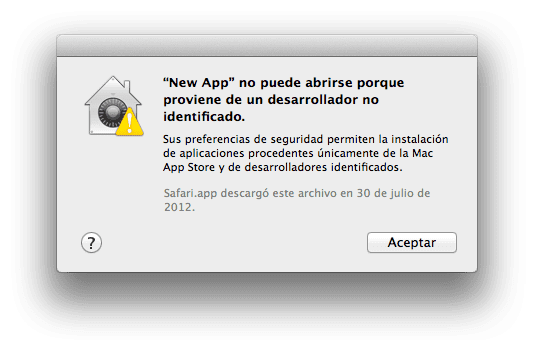
From time to time, while the security system included in OS X, Gatekeeper, does its thing preventing us from updating certain applications or directly prohibiting their execution, this occurs in part because a program, whether signed or not by the developer, has been later modified and this action prevents malware from entering the system resulting in a "warning" message where we are warned that the app is corrupted and that it should be moved to the trash.
On the other hand, this type of corrupted application alert does not have a built-in option to bypass the protection as opposed to the signed applications where if we could do it simply by clicking on Open with the «right button» or changing the system preferences.

This feature can be very useful if we stick to the strictest security plane but it can also be frustrating because certain programs modify themselves when they run automatically in the background or even manually without realizing it, this leads to that a developer can legitimately publish a program update if it is signed but that at the time of verification it can trigger a false positive skipping the 'app damaged' warning.
One option would be to wait for a fixed and tested version that works correctly with Gatekeeper and that has been previously testedHowever, this may take longer than necessary and may not be the best route.
On the other hand, if we know the version of the program that is being blocked there is a way to overcome this problem and that is to create an exception in Gatekeeper. To do this we will create a set of rules in relation to updating this application through a few simple Terminal commands:
- Open the terminal and enter the following
spctl --add --label "NAME"
- In the above command we will replace "NAME" with a label that you would like for the rule in question, such as "EXCEL" if we refer to Microsoft Excel.
- Then we must make sure that we keep the spaces and the command has been defined correctly to finish completing the route:
spctl --add --label "NAME" / Applications / Program \ Folder / Program.app
With this, we can run the application without problems because Gatekeeper will have recorded the exception for that particular program.
More information - Change the number of recent files displayed in OSX
You should better explain the process.
"So that we Mongolians who use MacOS can understand it," you failed to add.
After performing the indicated instruction, I keep getting the same error, the application is still "corrupted" and cannot be opened. This is insufferable, this MacOS thing is becoming intolerable, I'm going to end up migrating back to Windows 10. Luckily Parallels saves me.